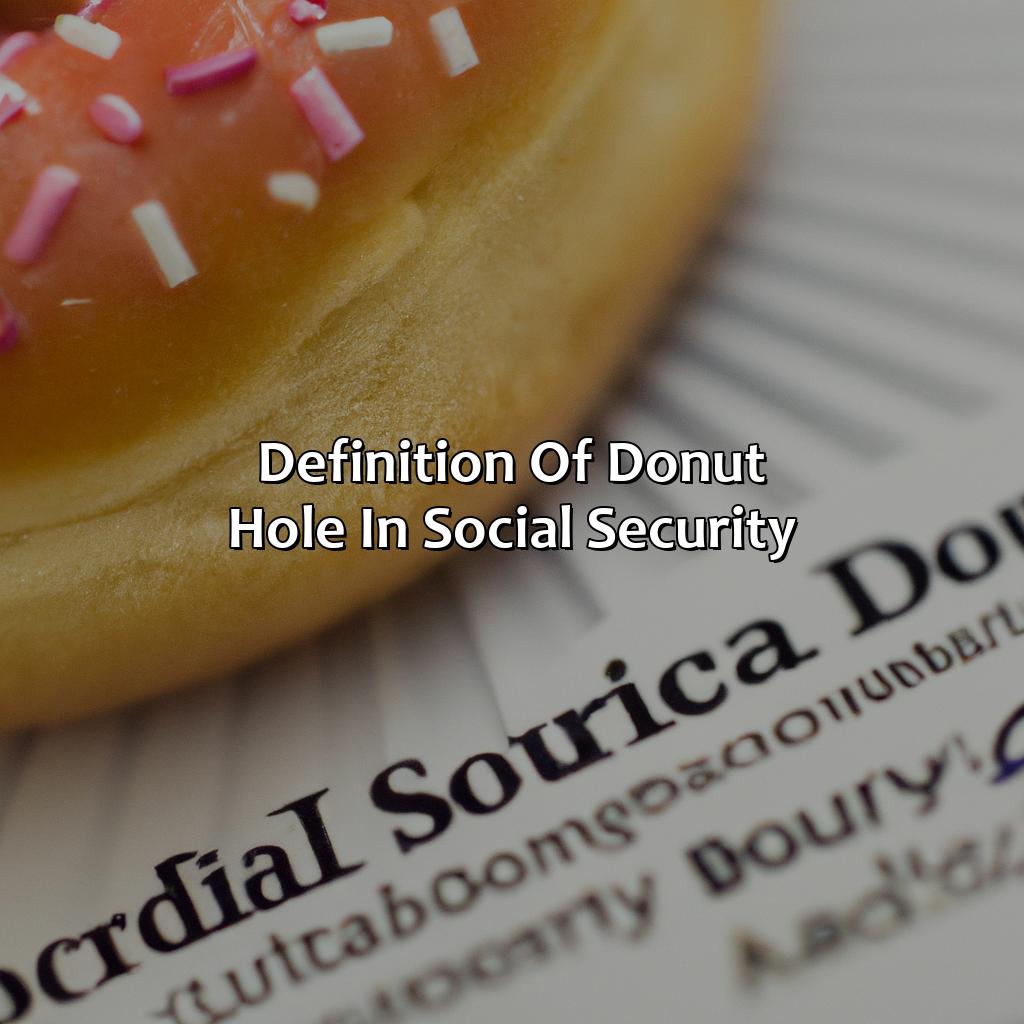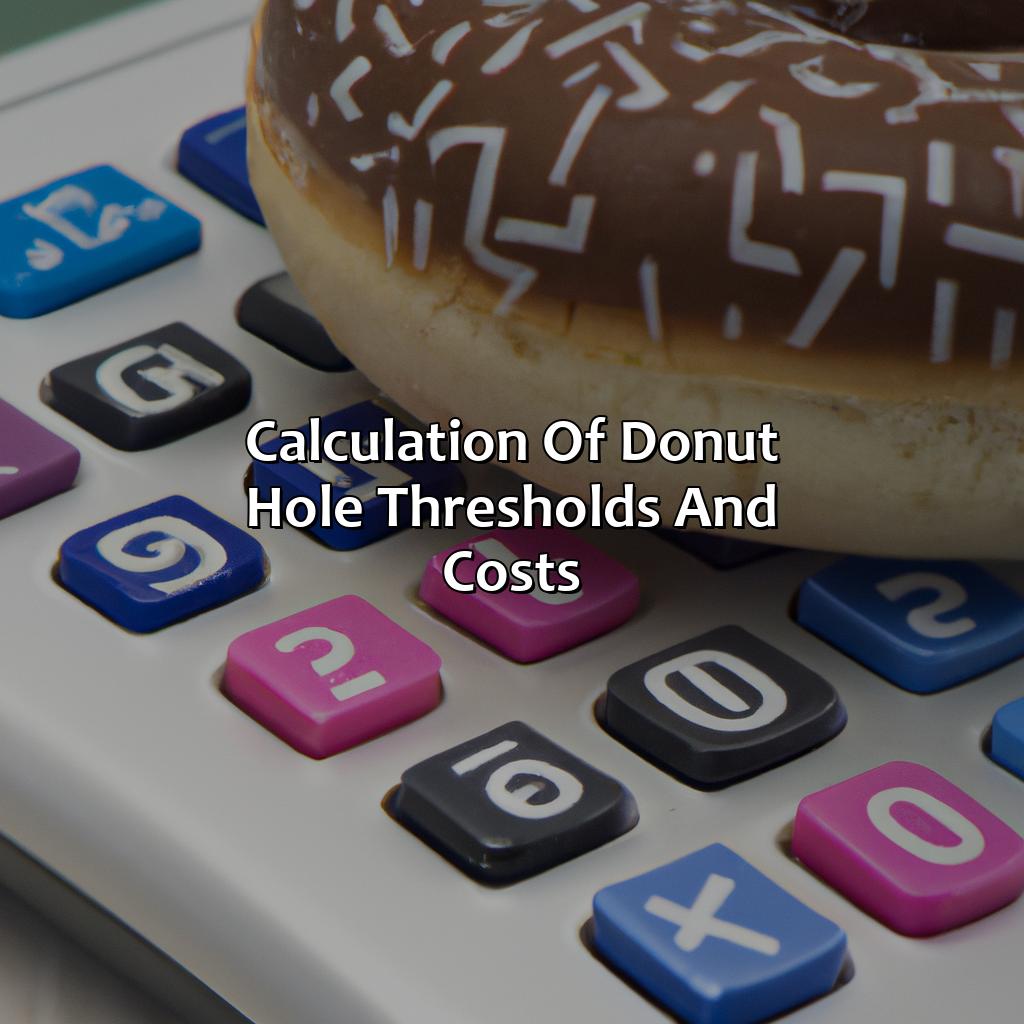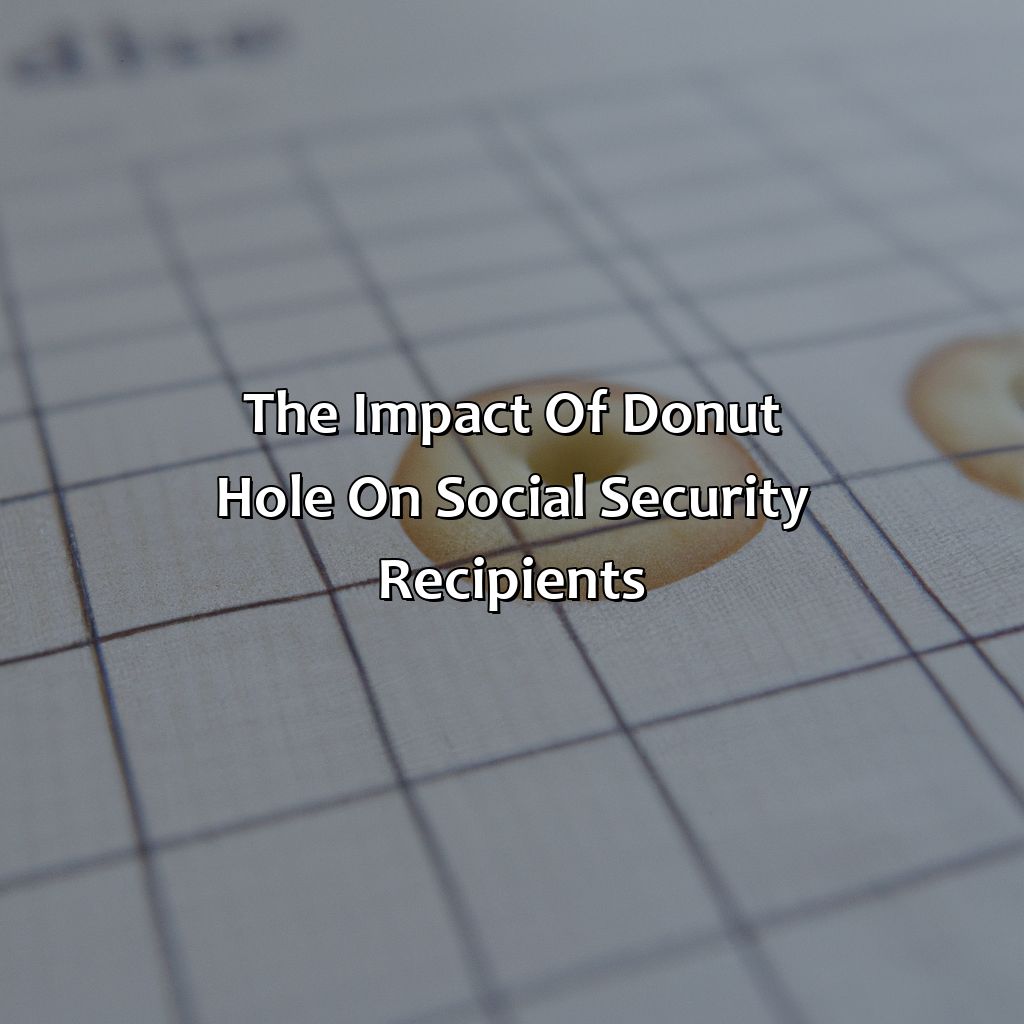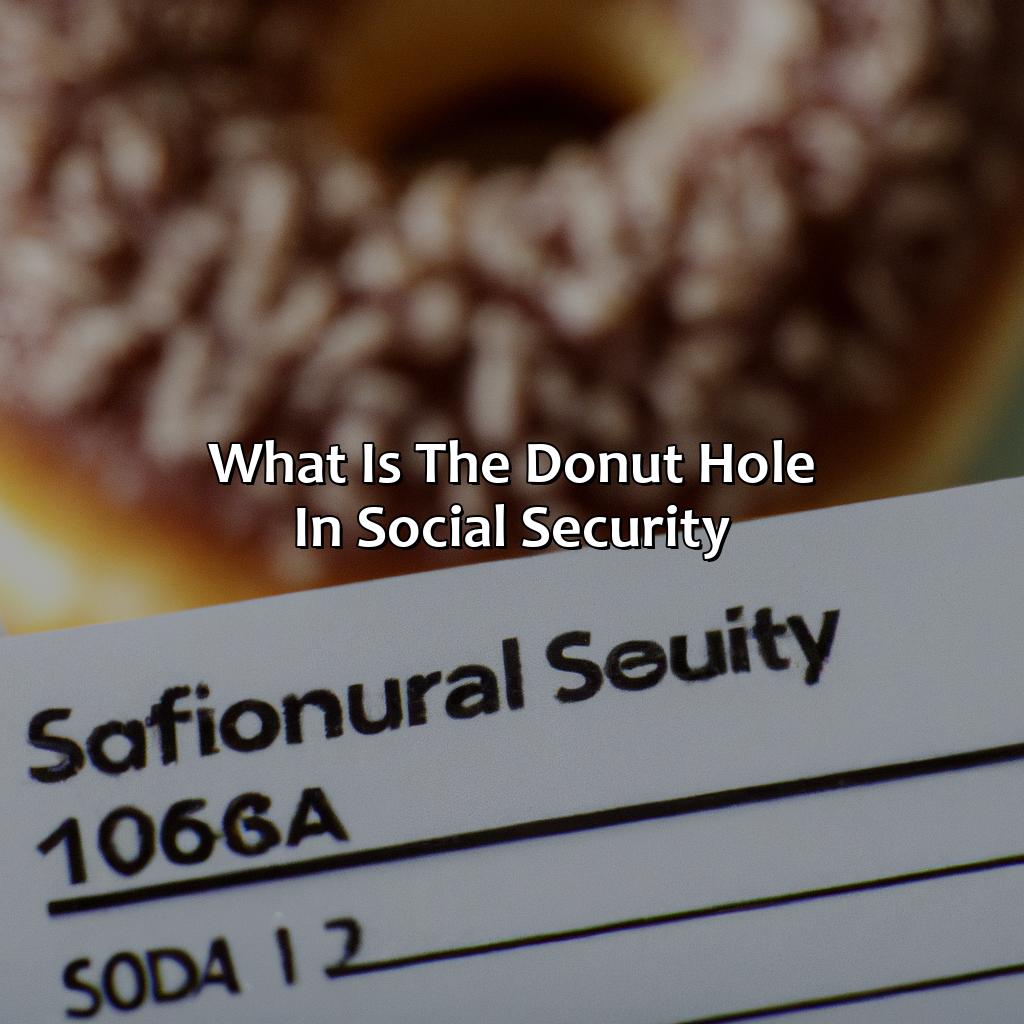What Is The Donut Hole In Social Security?
Key Takeaway:
- Donut hole in Social Security is the coverage gap in Medicare Part D prescription drug coverage, where beneficiaries are responsible for paying a greater share of their prescription drug costs. This gap occurs when the cumulative drug costs reach the initial coverage limit but have not yet reached the catastrophic coverage threshold.
- Medicare Part D donut hole thresholds and costs are adjusted annually, and beneficiaries should keep track of their out-of-pocket drug expenses to avoid reaching the coverage gap. Strategies to manage donut hole expenses include seeking financial assistance, switching to generic drugs, and comparing prices between different prescription drug plans.
- Understanding the donut hole in Social Security is crucial for retirees, as it can significantly impact their healthcare costs and financial well-being. By staying informed and taking proactive steps to manage drug expenses, beneficiaries can mitigate the effects of the coverage gap and maintain their quality of life.
Do you need help understanding the donut hole when it comes to Social Security? Confused by the coverage gap? Read on to discover what the donut hole is and how it affects you and your Social Security benefits.
Understanding Social Security Donut Hole
Social Security’s Coverage Gap, commonly referred to as the ‘Donut Hole’, appears between the initial coverage limit and the catastrophic coverage threshold. During this time, those enrolled in Medicare Part D face higher out-of-pocket costs for prescription drugs. Once out-of-pocket spending for prescriptions exceeds a specific limit, they receive catastrophic coverage, making coinsurance payments or co-payments lower. It’s important to understand when this gap occurs and how it affects Medicare beneficiaries.
The donut hole may seem brief, but it’s important to know the impact it can have on your finances. In 2021, the coverage gap begins when the beneficiary reaches $4,130 in total drug costs and ends once the beneficiary has spent $6,550 for the year. During the coverage gap, beneficiaries must pay a percentage of the drug cost until they reach the out-of-pocket spending limit where they then pay the lower cost-sharing rate. Private insurance companies often offer additional coverage during this time to help alleviate the financial burden.
It’s essential to note that once a beneficiary has spent $6,550, they fall into the catastrophic coverage phase, and their out-of-pocket spending responsibility decreases significantly. According to the Centers for Medicare and Medicaid Services, in 2019, the average savings for beneficiaries who entered the catastrophic coverage phase was $1,200.
The donut hole presents a financial challenge for many beneficiaries in Medicare Part D and may impact whether they can afford their medications. It’s essential to be aware of the coverage gap’s timing and speak with your healthcare provider and insurance carrier about how to navigate this additional cost.

Image credits: retiregenz.com by David Jones
Definition of Donut Hole in Social Security
The Donut Hole in Social Security refers to a gap in Medicare Part D coverage. It is a period where beneficiaries pay higher out-of-pocket costs for their prescription drugs, even if they have insurance. The Donut Hole starts after reaching a certain spending limit and ends when the beneficiary has spent enough to qualify for “catastrophic coverage.”
During the Donut Hole, beneficiaries pay a higher percentage of the cost of prescription drugs. Some prescription drugs may not even be covered at all, leaving beneficiaries to pay the full cost. However, there are programs and assistance available for those who cannot afford their medication during this period.
It is important for Medicare beneficiaries to keep track of their medication spending to avoid falling into the Donut Hole. They can also talk to their healthcare provider to find lower-cost options or switch to different medications that are covered.
Pro Tip: Staying informed about your medication coverage and spending can help you save money on prescription drugs during the Donut Hole in Social Security.

Image credits: retiregenz.com by Harry Duncun
Calculation of Donut Hole Thresholds and Costs
Do you need to understand how the Donut Hole thresholds and costs in Medicare Part D and Prescription Drug Plans are calculated? We can explain! This section will go into detail about the Donut Hole Calculations and their effect on healthcare costs. Plus, we’ll get into the two sub-sections: Medicare Part D Donut Hole and Donut Hole in Medicare Prescription Drug Plans.

Image credits: retiregenz.com by Adam Washington
Medicare Part D Donut Hole
The Medicare Prescription Drug, also known as Medicare Part D, contains a coverage gap referred to as the Donut Hole. This phase commences immediately after exceeding the initial coverage limit. During this phase, beneficiaries are accountable for higher prices of their medication until they reach the out-of-pocket threshold.
The cost breakdown within this coverage gap remained fixed before 2020, whereby Part D enrollees were accountable for covering:
- 25% of the drug expense up to $3,820 in 2019.
- Up to $6,350 worth of out-of-pocket spending.
Afterwards, recipients would enter Catastrophic Coverage. In contrast, since 2020 and moving forward, beneficiaries will only pay 25% of covered brand-name or generic drugs during this period until they achieve the out-of-pocket limitation.
This provision has helped cut down on expenditures that may lessen fiscal pressure on people enrolled in Part D plans. These individuals would previously postpone refilling their prescriptions while in the Donut Hole awaiting entrance into Catastrophic Coverage. Don’t worry, the donut hole in Medicare doesn’t refer to the size of the hole in your wallet, just the confusing gap in coverage.
Donut Hole in Medicare Prescription Drug Plans
Medicare Prescription Drug Plans have a coverage gap known as the Donut Hole. This occurs after the plan pays a certain amount for prescription drugs, and before catastrophic coverage begins. During this time, beneficiaries pay more out of pocket for drugs until they reach their out-of-pocket maximum.
The cost threshold to enter the Donut Hole in 2021 is $4,130. Once reached, beneficiaries will pay 25% of the cost of their brand name drugs and 37% of their generic drugs until they reach catastrophic coverage. The true fact is that some low-income beneficiaries may receive extra help paying for their prescriptions while in the coverage gap (source: Medicare.gov).
Pulling out a calculator may be necessary to survive the donut hole, but it’s the Social Security recipients who are really taking the hit.
The Impact of Donut Hole on Social Security Recipients
We must employ effective strategies to handle the costs caused by the donut hole in social security. This gap can really affect those receiving social security. We’ll look at various approaches to help manage these expenses, so you’re not surprised by unexpected costs.

Image credits: retiregenz.com by James Washington
Strategies to Manage Donut Hole Expenses
Handling Expenses during the Medicare Coverage Gap
One of the greatest financial burdens that Social Security recipients face is the Medicare coverage gap, also known as Donut Hole. This policy can cause high out-of-pocket expenses for prescription medications and healthcare. Here are some strategic measures to help seniors cope with these expenses:
- Look for High-Value Prescription Drugs.
- Consult with a Doctor or Insurance Agent about Your Options
- Use Drug Manufacturer Discounts and Savings Plans
- Inquire About Government Programs to Assist with Medicare Expenses
- Research Investment Opportunities in Health Care Suppliers or Pharma Funds
- Budget Diligently, Increase Savings
In addition to these strategies, it’s essential to educate oneself about health insurance policies to ensure full knowledge of when the Donut Hole happens. These policies are regularly updated; therefore, identifying any changes is crucial.
Statistics on how Donut Hole affects healthcare costs have shown alarming trends concerning social security recipients’ finances. Between 2006 and 2016, beneficiaries spent an average of $3,100 per year before reaching catastrophic coverage levels. During the same period, almost one in four beneficiaries stopped taking vital medication due to cost concerns.
Medicare has continued administering different solutions to address these concerns, such as discounts on name-brand drugs from manufacturers and subsidies for generic drug prescriptions. Despite this assistance by government agencies, it’s essential for individuals to take a cautious approach with their medication spending by implementing budgeting techniques and consulting insurance agents about their healthcare options.
5 Facts About the Donut Hole in Social Security:
The Donut Hole in Social Security refers to a gap in Medicare Part D prescription drug coverage. (Source: AARP)
The Donut Hole starts when you reach the initial coverage limit and ends when you have spent enough money out of pocket to qualify for catastrophic coverage. (Source: Medicare.gov)
In 2021, the Donut Hole begins when total drug costs reach $4,130 and ends when out-of-pocket expenses reach $6,550. (Source: Centers for Medicare & Medicaid Services)
During the Donut Hole, you may have to pay more for your medications, including the full cost of generic drugs. (Source: AARP)
Certain low-income individuals may qualify for assistance with Donut Hole costs through the Extra Help program. (Source: Social Security Administration)
FAQs about What Is The Donut Hole In Social Security?
What is the donut hole in social security?
The “donut hole” in social security refers to a gap in Medicare Part D prescription drug coverage. It is the period of time during which the beneficiary is responsible for paying the full cost of their prescription drugs, after their initial coverage period has ended.
What is the initial coverage period?
The initial coverage period is the first part of Medicare Part D prescription drug coverage, during which the beneficiary pays only a percentage of the cost of their prescription drugs, with the rest being covered by Medicare. The length of the initial coverage period varies from year to year and from plan to plan.
When does the donut hole begin and end?
The donut hole begins when the total cost of a beneficiary’s prescription drugs reaches a certain amount, which is known as the “initial coverage limit”. Once this limit is reached, the beneficiary is responsible for paying the full cost of their drugs until they reach the “catastrophic coverage threshold”. At this point, Medicare once again covers most of the cost of the beneficiary’s prescription drugs.
How much does the donut hole cost?
The cost of the donut hole varies depending on the cost of the beneficiary’s prescription drugs. In 2021, once the initial coverage limit is reached, the beneficiary is responsible for 25% of the cost of their prescription drugs until they reach the catastrophic coverage threshold.
Is there any way to avoid the donut hole?
There are several ways to avoid the donut hole, such as choosing a Medicare Part D plan with coverage that extends beyond the initial coverage limit, asking your doctor to prescribe lower-cost drugs, or applying for assistance programs that can help cover the cost of prescription drugs.
How can I find out more about the donut hole and Medicare Part D?
You can visit the official Medicare website or speak with a licensed insurance agent who can help explain the details of Medicare Part D prescription drug coverage and answer any questions you may have.
 Checkout this IRS Loophole
Checkout this IRS Loophole 
